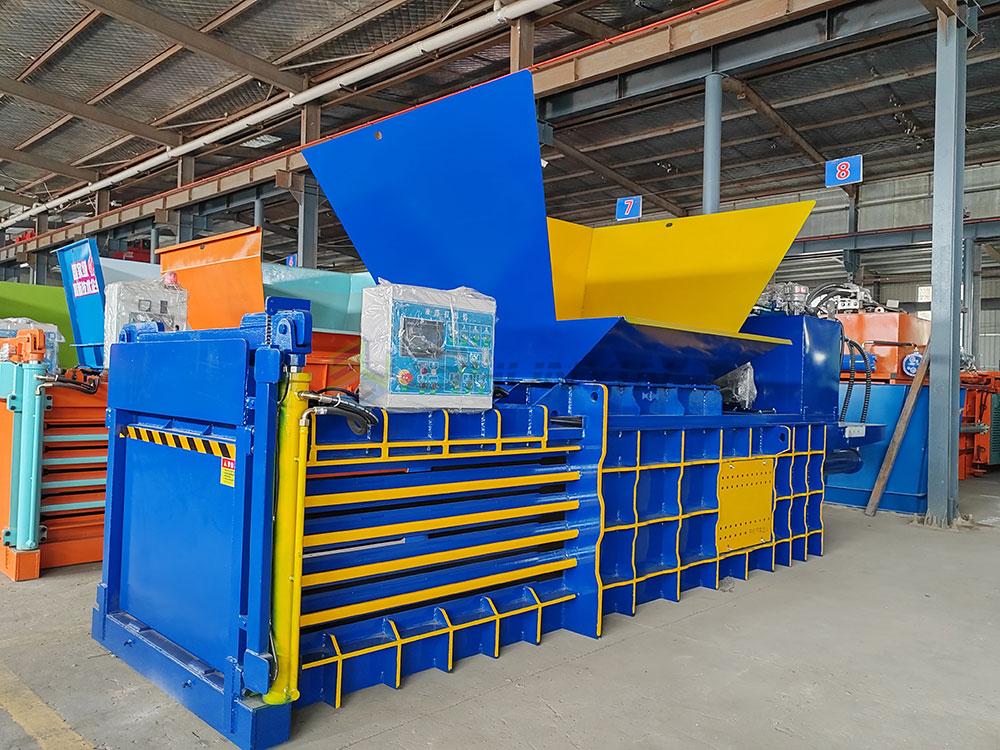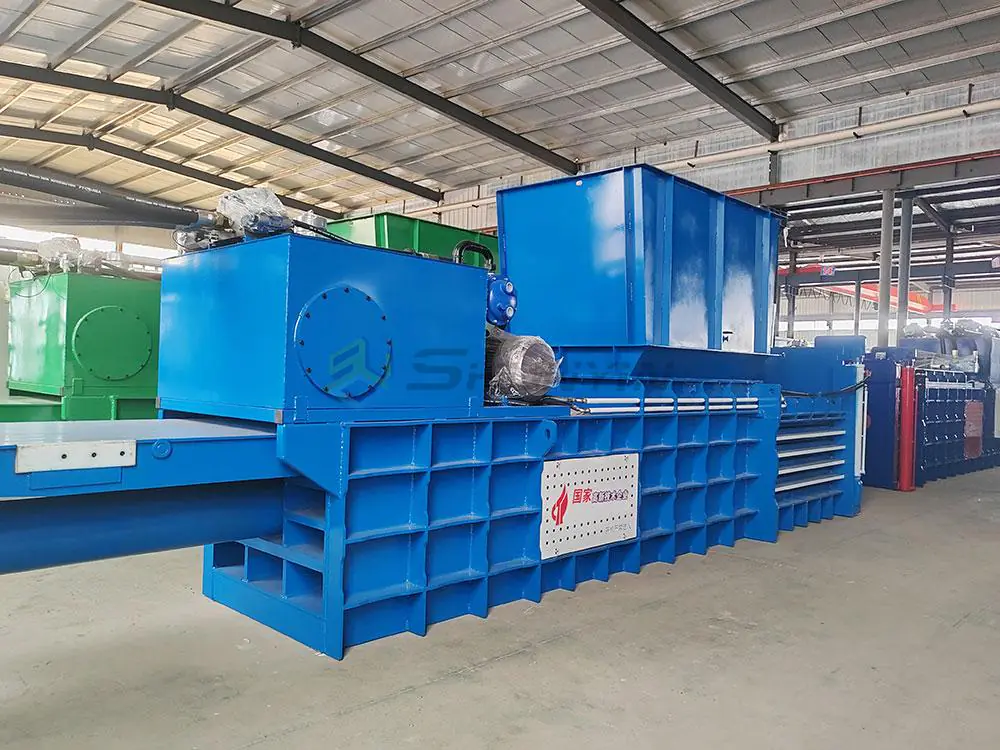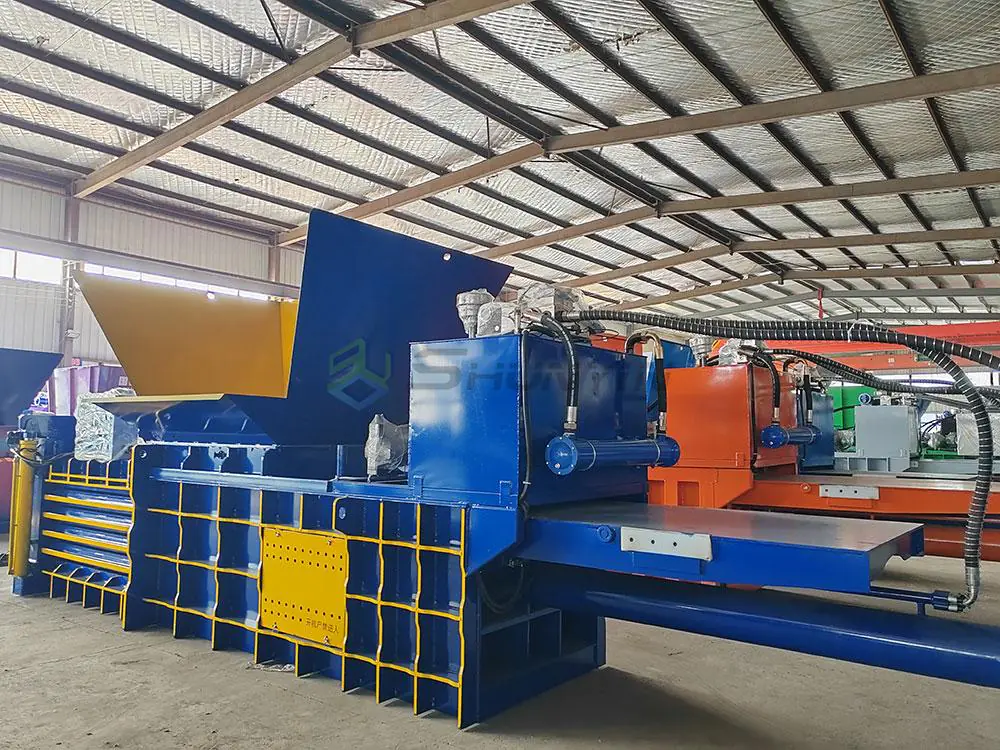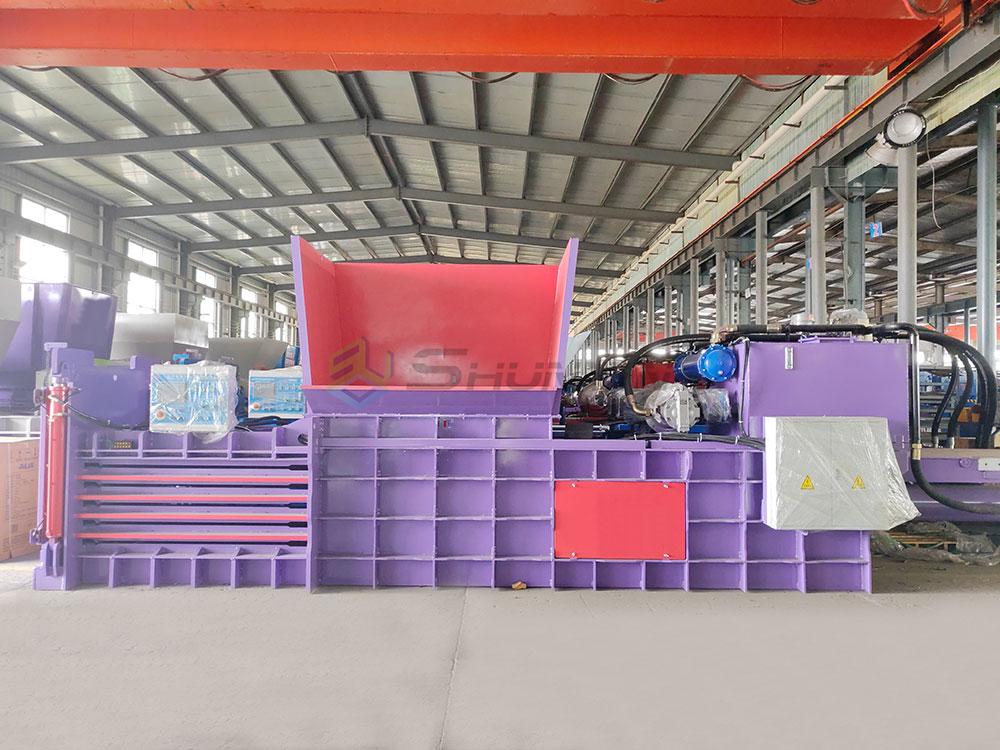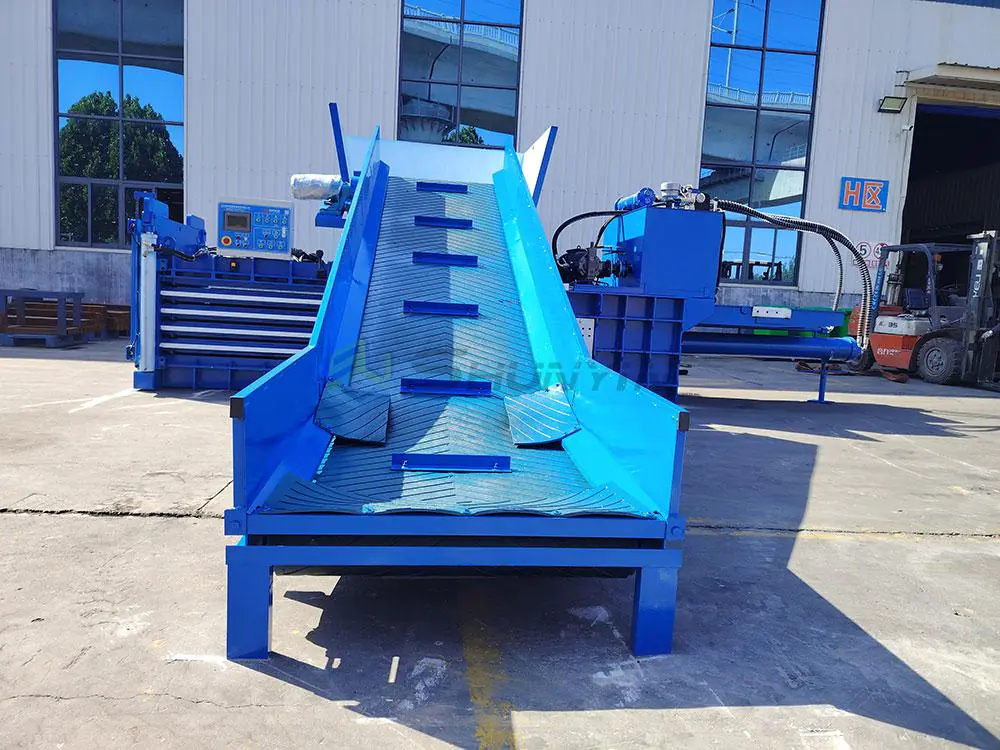
Last Tuesday, I watched a paper recycling plant in Osaka reject their seventh single-ram baler this year. Their maintenance logs showed 47% downtime caused by overheating cylinders – a problem we eliminated in our dual-ram models through split hydraulic circuits.
Two ram balers outperform single-piston models by executing compression and ejection phases simultaneously through separate hydraulic systems, reducing cycle times from 55 to 38 seconds while increasing bale density by 19% according to our 2023 field tests.
Let me break down why this technology matters for your bottom line.
What is the Difference Between Single RAM and Dual RAM Balers?
I learned this the hard way during a 2019 installation in Vancouver. The client insisted on single-ram units to save $8,000 per machine. Six months later, they were begging to upgrade after 22 workers resigned due to production pressure.
Single ram balers use one piston that must complete full compression and retraction cycles sequentially, while dual ram systems deploy separate pistons for compacting (main ram) and bale shaping (secondary ram), allowing parallel processing that cuts idle time by 63%.

Our engineers measure differences down to the hydraulic oil temperature:
-
Single RAM Cycle
- Full compression (14 sec)
- Complete retraction (9 sec)
- Material reload (7 sec)
Total: 30 seconds
Oil temp reaches 68°C
-
Dual RAM Cycle
- Main ram compression (12 sec)
- Secondary ram activates during retraction (6 sec)
- Continuous reload
Total: 18 seconds
Oil temp stabilizes at 54°C
The dual system’s synchronized valve timing prevents pressure spikes that degrade seals. We implement pressure-compensated flow controls that adjust pump output in real-time – a feature our Japanese clients say reduces maintenance costs by $420/month per machine.
What is a 2 RAM Baler?
When we first prototyped dual ram tech in 2020, our biggest challenge was preventing the rams from fighting each other. The solution came from marine hydraulic systems – parallel circuits with individual relief valves.
A 2 ram baler combines two independently controlled hydraulic pistons: one for vertical compaction (main cylinder produces 28 tons force) and one for horizontal compression/ejection (secondary cylinder at 18 tons), enabling three key operations to happen simultaneously instead of consecutively.

Let me explain using our SY-330D model’s schematics:
-
Stage 1 – Material Loading
The feed conveyor operates continuously, unlike single-ram units that must pause during compression. Our agitated hopper design prevents material bridging – a common issue with plastic film. -
Stage 2 – Dual Compression
- Main ram descends at 200mm/sec
- Secondary ram begins lateral compression at 80% stroke
This overlap creates a "hammer and anvil" effect that British Steel credits for reducing scrap volume by 37%
-
Stage 3 – Bale Ejection
While the main ram resets, the secondary ram pushes finished bales onto the discharge platform. Our patented shock absorbers prevent the 12-ton bales from damaging concrete floors – a $22,000 retrofit cost we’ve saved for three Chicago clients.
The real magic happens in the control panel. Our PLC monitors both ram positions with 0.5mm accuracy, adjusting speeds to maintain perfect synchronization even with uneven material loads.
What is the Difference Between Vertical and Horizontal Balers?
I almost lost my biggest Canadian client in 2021 when their vertical baler jammed with 900kg of copper wire. It took eight hours to cut it free. We replaced it with a horizontal dual-ram unit that’s processed 14,000 tons without a single jam.
Vertical balers compress downward using gravity-fed chambers suitable for light materials (under 5 tons/day), while horizontal balers employ forced-feed systems and multi-stage compression ideal for heavy, irregular materials common in industrial recycling.

Here’s what factories should know:
Material Compatibility
-
Vertical: Works best for fluffy materials
- Textiles: 85% density achieved
- PET bottles: 72% density
- Limitations: Metal shavings cause 83% more jams
-
Horizontal: Handles dense/rigid materials
- Steel turnings: 12% higher density than vertical
- Cast aluminum: 22% faster cycle times
- Customizable channels prevent wire entanglement
Labor Requirements
A Montreal recycler reduced staff from 5 to 1.5 operators after switching to our horizontal system. Automated tie-wire systems eliminated manual strapping – their workers now focus on quality checks rather than brute-force packing.
| Throughput Data | Material | Vertical Baler Output | Horizontal Baler Output |
|---|---|---|---|
| Corrugated Cardboard | 2.1 tons/hr | 4.8 tons/hr | |
| HDPE Containers | 1.4 tons/hr | 3.2 tons/hr | |
| Aluminum Siding | Not Recommended | 2.7 tons/hr |
Our German-engineered feed rollers in horizontal units apply 1.2 tons of downward pressure, forcing materials into the compression chamber – no more manual stomping required. The dual rams then work in three planes (vertical, horizontal, angular) to eliminate voids.
Conclusion
Dual ram technology isn’t just about speed – it’s about creating predictable, sustainable workflows. See our live demos at Shunyin Machinery to understand why 37 countries choose our horizontal balers for mission-critical recycling operations.


